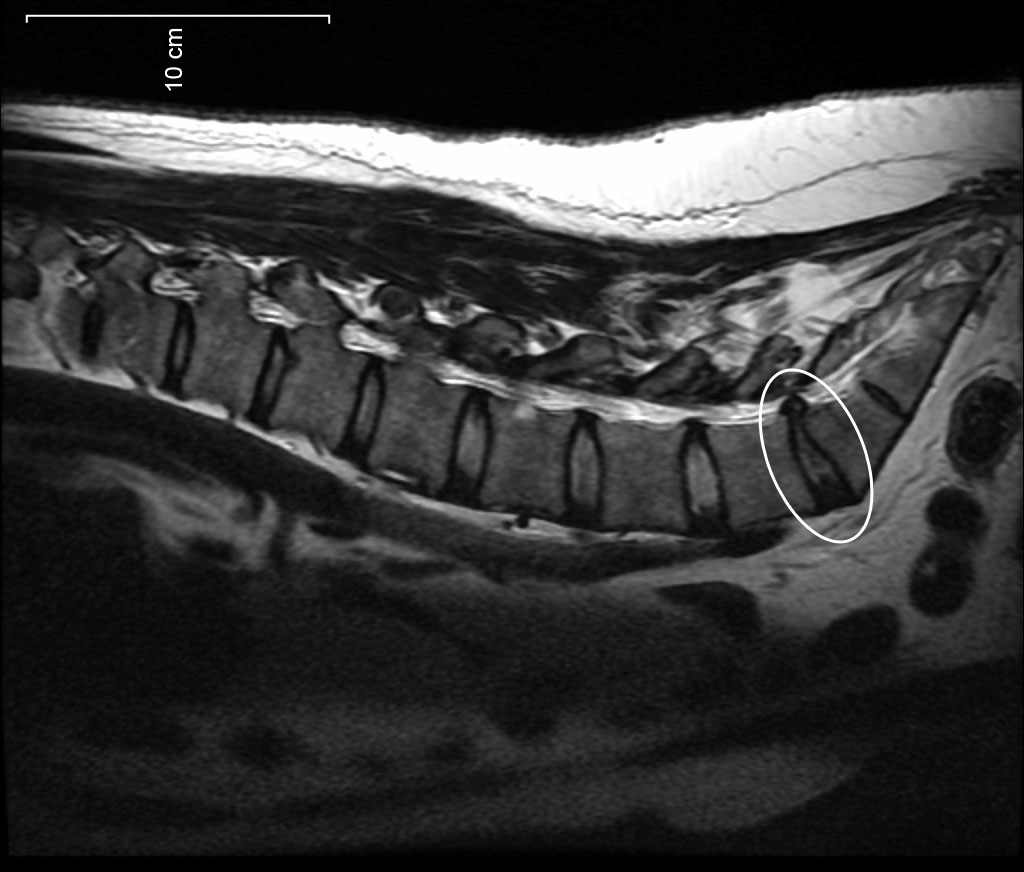disc protrusion on:
[Wikipedia]
[Google]
[Amazon]
 A disc protrusion is a medical condition that can occur in some
A disc protrusion is a medical condition that can occur in some 
 A disc protrusion is a medical condition that can occur in some
A disc protrusion is a medical condition that can occur in some vertebrate
Vertebrates () are animals with a vertebral column (backbone or spine), and a cranium, or skull. The vertebral column surrounds and protects the spinal cord, while the cranium protects the brain.
The vertebrates make up the subphylum Vertebra ...
s, including humans, in which the outermost layers of the ''anulus fibrosus'' of the intervertebral disc
An intervertebral disc (British English), also spelled intervertebral disk (American English), lies between adjacent vertebrae in the vertebral column. Each disc forms a fibrocartilaginous joint (a symphysis), to allow slight movement of the ver ...
s of the spine
Spine or spinal may refer to:
Science Biology
* Spinal column, also known as the backbone
* Dendritic spine, a small membranous protrusion from a neuron's dendrite
* Thorns, spines, and prickles, needle-like structures in plants
* Spine (zoology), ...
are intact but bulge when one or more of the discs are under pressure.
Many disk abnormalities seen on MRI
Magnetic resonance imaging (MRI) is a medical imaging technique used in radiology to generate pictures of the anatomy and the physiological processes inside the body. MRI scanners use strong magnetic fields, magnetic field gradients, and rad ...
that are loosely referred to as "herniation
A hernia (: hernias or herniae, from Latin, meaning 'rupture') is the abnormal exit of tissue or an organ, such as the bowel, through the wall of the cavity in which it normally resides. The term is also used for the normal development of the in ...
" are actually just incidental findings. These may be unrelated to any symptoms and are just bulges of the ''anulus fibrosus''. Jensen and colleagues, in an MRI study of the lumbar spine
The lumbar vertebrae are located between the thoracic vertebrae and pelvis. They form the lower part of the back in humans, and the tail end of the back in quadrupeds. In humans, there are five lumbar vertebrae. The term is used to describe t ...
in 98 ''asymptomatic'' adults, found that in more than half, there was a symmetrical extension of a disc (or discs) beyond the margins of the interspace (bulging). In 27 percent, there was a focal or asymmetrical extension of the disc beyond the margin of the interspace (protrusion), and in only 1 percent was there more extreme extension of the disc (extrusion or sequestration). These findings emphasize the importance of using precise terms in describing the imaging abnormalities and evaluating them strictly in the context of the patient's symptoms.Ropper AH, Samuels MA, Klein JP. Chapter 11. Pain in the Back, Neck, and Extremities. In: Ropper AH, Samuels MA, Klein JP. eds. Adams & Victor's Principles of Neurology, 10e. New York, NY: McGraw-Hill; 2014. http://accessmedicine.mhmedical.com.eres.library.manoa.hawaii.edu/content.aspx?bookid=690&Sectionid=45424419. Accessed September 29, 2015.
A disc protrusion may progress to a spinal disc herniation
A disc herniation or spinal disc herniation is an injury to the intervertebral disc between two vertebrae, usually caused by excessive strain or trauma to the spine. It may result in back pain, pain or sensation in different parts of the body, ...
, a condition in which there is a tear in the ''anulus fibrosus''. The most common area to have a disc protrusion is in the Lumbar Spine, specifically L-5.

Treatment Options
There are a handful of different treatment options available, these can range from basic physical therapy to specific surgeries. Some disc protrusion may resolve on their own or with physical therapy within six weeks, which is why many prefer to start treatment with physical therapy and other non-invasive treatments. How treatment starts depends on how severe symptoms are .Non-Invasive Treatment
Non-invasive treatment has a few layers to it. This may begin with physical therapy and oral medications, and move on to epidural injections. Within non-invasive treatment is also acupuncture and chiropractic specialty. Epidural injections are often a go to for doctors when they see patients who have chronic lumbar back pain, these injections go into the epidural space of the spinal column and reduce irritation to nerve roots, which reduces pain while the disc continues to heal on its own, though these types of injections are only considered after others have failed, such as physical therapy, exercise, and medicationInvasive Treatment
Invasive treatment mostly includes surgery, and there are a few different operations that a doctor may suggest depending on the nature and severity of the injury. One of the common surgeries performed is called a Microdiscectomy, during this surgery the injured tissue of the intervertebral disc, ligament, and possibly bone is removed in order to alleviate pressure on nerve roots, this procedures is mainly for pain relief.References
Bones of the vertebral column {{musculoskeletal-disease-stub